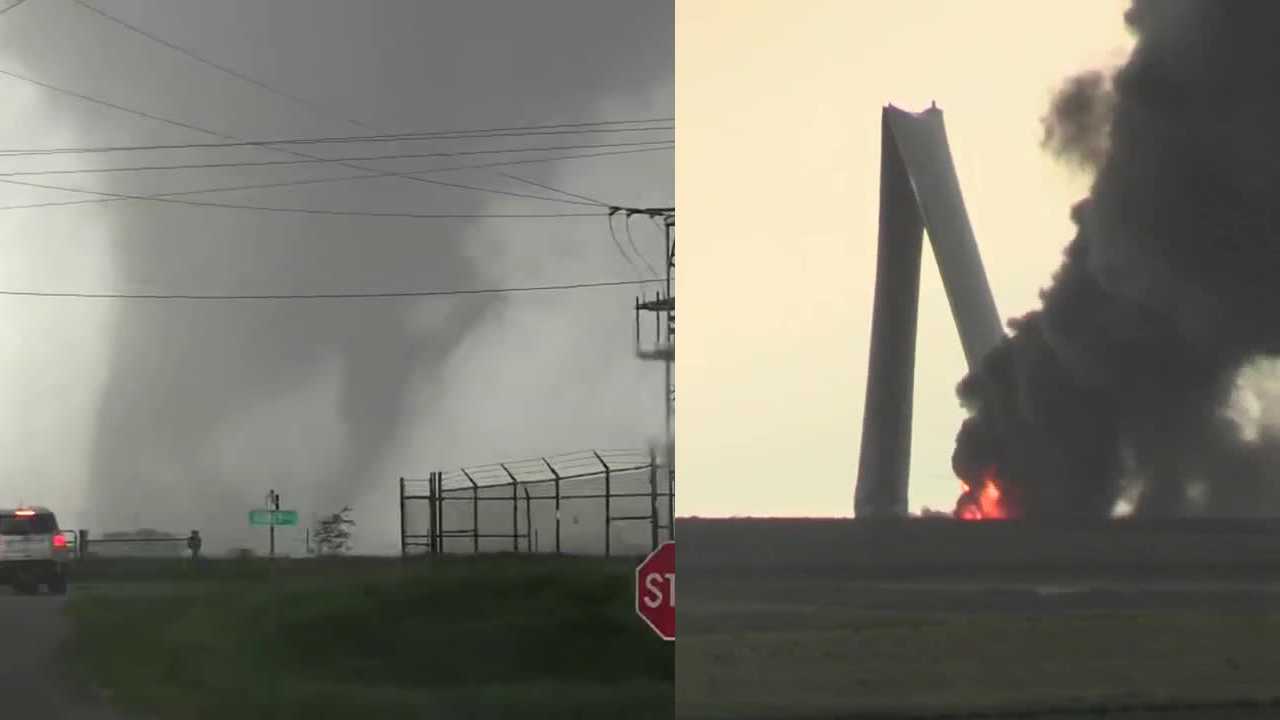Iowa Tornadoes
Iowa tornadoes – Iowa has a long and tragic history with tornadoes. The state is located in the heart of Tornado Alley, a region of the United States that experiences more tornadoes than any other part of the world. Iowa’s tornadoes have caused widespread destruction and loss of life over the years.
Frequency and Severity of Tornadoes in Iowa
Iowa averages about 50 tornadoes per year, more than any other state in the United States. These tornadoes range in intensity from weak EF0 tornadoes to violent EF5 tornadoes. The most destructive tornado in Iowa history was the Des Moines tornado of 1947, which killed 171 people and injured over 1,000.
Tornado Paths and Damage in Iowa
Tornadoes can occur anywhere in Iowa, but they are most common in the central and western parts of the state. The most common tornado path in Iowa is from southwest to northeast. Tornadoes can cause a wide range of damage, including destroying buildings, uprooting trees, and downing power lines.
Tornado Safety in Iowa

Iowa is one of the most tornado-prone states in the United States. In fact, Iowa averages more tornadoes per year than any other state. This is due to the state’s location in the middle of the country, which puts it in the path of many different weather systems. As a result, it is important for Iowans to be prepared for tornadoes.
There are a number of things that Iowans can do to prepare for tornadoes. First, it is important to have a tornado safety plan. This plan should include a list of safe places to go in the event of a tornado, as well as a plan for how to get to those places quickly. It is also important to have a battery-powered radio and flashlights on hand in case of a power outage.
In addition to having a tornado safety plan, it is also important to know the different types of tornado shelters and their effectiveness. There are two main types of tornado shelters: above-ground shelters and below-ground shelters.
Above-Ground Shelters
Above-ground shelters are typically constructed of reinforced concrete or steel. They are designed to withstand the high winds and debris that are associated with tornadoes. Above-ground shelters can be found in a variety of locations, including schools, churches, and businesses.
Below-Ground Shelters, Iowa tornadoes
Below-ground shelters are typically constructed of concrete or steel. They are designed to be buried underground, which provides them with additional protection from tornadoes. Below-ground shelters can be found in a variety of locations, including homes, businesses, and schools.
The effectiveness of a tornado shelter depends on a number of factors, including the type of shelter, the construction of the shelter, and the location of the shelter. However, all tornado shelters provide some level of protection from tornadoes.
Tornado Forecasting and Warning Systems in Iowa: Iowa Tornadoes

Iowa’s tornado forecasting and warning systems are a vital part of keeping the state’s residents safe. The National Weather Service (NWS) has a network of Doppler radar stations across the state that can detect tornadoes and issue warnings within minutes.
Technology Used to Forecast Tornadoes in Iowa
The NWS uses a variety of technologies to forecast tornadoes in Iowa, including:
- Doppler radar: Doppler radar can detect the rotation of the air within a storm, which can indicate the presence of a tornado.
- Satellite imagery: Satellite imagery can be used to track the movement of storms and identify areas where tornadoes are likely to develop.
- Numerical weather prediction models: Numerical weather prediction models can be used to simulate the atmosphere and predict where tornadoes are likely to occur.
Types of Tornado Warnings Issued in Iowa
The NWS issues two types of tornado warnings in Iowa:
- Tornado watch: A tornado watch means that conditions are favorable for tornadoes to develop. When a tornado watch is issued, people should be prepared to take shelter if a tornado warning is issued.
- Tornado warning: A tornado warning means that a tornado has been spotted or indicated by radar. When a tornado warning is issued, people should take shelter immediately.
Effectiveness of Tornado Warning Systems in Iowa
Iowa’s tornado warning systems have been credited with saving lives. In 2013, for example, the NWS issued a tornado warning for Moore, Oklahoma, just minutes before a tornado struck the city. The warning gave residents time to take shelter, and no one was killed in the tornado.
Economic Impact of Tornadoes in Iowa
Tornadoes can have a devastating impact on Iowa’s economy, particularly its agriculture industry. The destruction of crops, livestock, and farm infrastructure can result in significant financial losses for farmers and the state as a whole.
Costs of Rebuilding and Repairing Infrastructure
In addition to the direct impact on agriculture, tornadoes can also cause extensive damage to infrastructure, including homes, businesses, schools, and roads. The costs of rebuilding and repairing this infrastructure can be substantial, placing a strain on local and state budgets.
Government and Insurance Programs
To assist tornado victims in Iowa, the government and insurance companies offer a range of programs. These programs provide financial assistance for rebuilding efforts, temporary housing, and other essential services.
Climate Change and Tornadoes in Iowa

Climate change is a complex and multifaceted phenomenon that is expected to have a wide range of impacts on the Earth’s climate system. One potential impact of climate change is an increase in the frequency and severity of tornadoes. While there is still some uncertainty about the exact nature of these impacts, research suggests that climate change could lead to an increase in the number of tornadoes that occur in Iowa and other parts of the Midwest.
Predicting Future Tornado Patterns in Iowa
Predicting future tornado patterns in Iowa is a complex task. There are a number of factors that can influence tornado activity, including atmospheric conditions, land use, and climate change. Climate change is one of the most difficult factors to predict, as it is a complex and ever-evolving process. However, there are a number of research studies that have investigated the potential effects of climate change on tornadoes.
Research on Climate Change and Tornadoes in Iowa
One study, published in the journal Nature Climate Change, found that climate change could lead to an increase in the number of tornadoes that occur in the Midwest. The study found that the increase in tornadoes would be most pronounced in the spring and summer months. Another study, published in the journal Climate Dynamics, found that climate change could lead to an increase in the intensity of tornadoes. The study found that the increase in intensity would be most pronounced in the central and eastern United States.